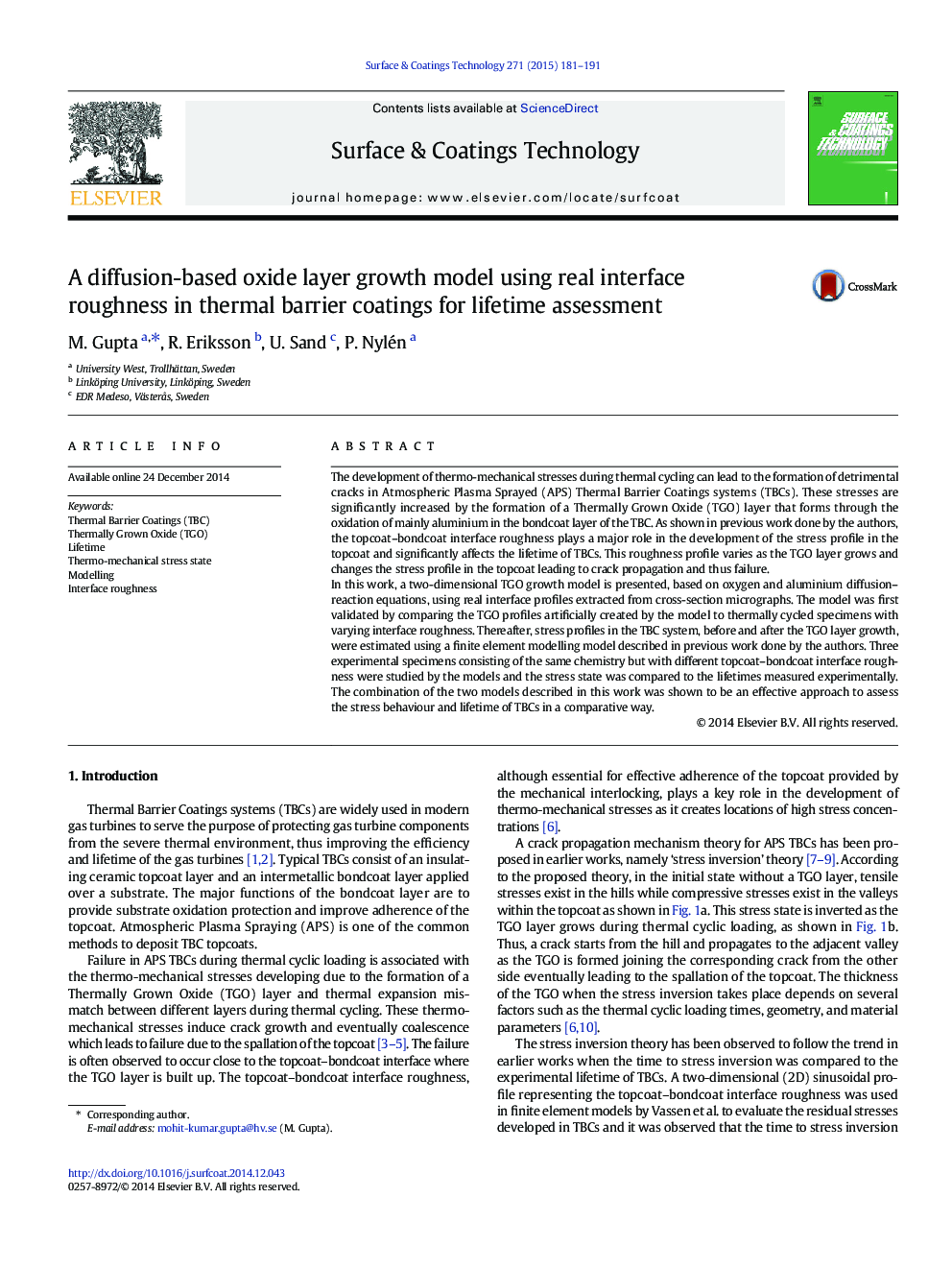| Article ID | Journal | Published Year | Pages | File Type |
|---|---|---|---|---|
| 1656903 | Surface and Coatings Technology | 2015 | 11 Pages |
•Three specimens with different interface roughness but same chemistry were analysed.•An oxide growth model was developed to visualise oxide growth in-situ.•Stress analysis model was used to predict time to stress inversion during testing.•Combination of two models was shown effective to assess lifetime comparatively.
The development of thermo-mechanical stresses during thermal cycling can lead to the formation of detrimental cracks in Atmospheric Plasma Sprayed (APS) Thermal Barrier Coatings systems (TBCs). These stresses are significantly increased by the formation of a Thermally Grown Oxide (TGO) layer that forms through the oxidation of mainly aluminium in the bondcoat layer of the TBC. As shown in previous work done by the authors, the topcoat–bondcoat interface roughness plays a major role in the development of the stress profile in the topcoat and significantly affects the lifetime of TBCs. This roughness profile varies as the TGO layer grows and changes the stress profile in the topcoat leading to crack propagation and thus failure.In this work, a two-dimensional TGO growth model is presented, based on oxygen and aluminium diffusion–reaction equations, using real interface profiles extracted from cross-section micrographs. The model was first validated by comparing the TGO profiles artificially created by the model to thermally cycled specimens with varying interface roughness. Thereafter, stress profiles in the TBC system, before and after the TGO layer growth, were estimated using a finite element modelling model described in previous work done by the authors. Three experimental specimens consisting of the same chemistry but with different topcoat–bondcoat interface roughness were studied by the models and the stress state was compared to the lifetimes measured experimentally. The combination of the two models described in this work was shown to be an effective approach to assess the stress behaviour and lifetime of TBCs in a comparative way.
